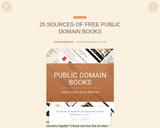
List of sites that offer free public domain books in electronic and audio format.

List of sites that offer free public domain books in electronic and audio format.

This resource is a comprehensive unit of instruction created and piloted by the ACSE Region III team over the 2022-23 school year. This unit, which is accessible through multiple links to include worksheets, slidedecks, teacher suggestions and planning documents, includes all components of the instruction with SOL connections and is intended to join Computer Science standards to an ELA content area.
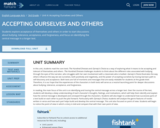
In this unit, students read the core texts The Hundred Dresses and Garvey's Choice as a way of exploring what it means to be accepting and tolerant of themselves and others. The Hundred Dresses challenges students to think about the different roles associated with bullying through the eyes of the narrator, who struggles with her own involvement with a classmate who is bullied. Garvey's Choice illustrates the way others influence the way we see ourselves, both positively and negatively, and the power of accepting ourselves by tracing Garvey's path to self-discovery and acceptance. Both texts are full of moments and messages that are easily relatable for students at this grade level. Therefore, it is our hope that the experiences of the characters in both texts will serve as a neutral launching point for deeper discussions about bullying, tolerance, acceptance, and forgiveness.
In reading, the main focus of the unit is on identifying and tracing the central message across a longer text. Over the course of the text, students will develop a deep understanding of each character's thoughts, feelings, and motivations, which will help them identify and explain how the central message is developed and conveyed through the characters. Students will also begin to understand how successive parts of a text build on each other to push the plot forward. Particularly with Garvey's Choice, students will analyze the genre features of novels written in verse and how each part helps build and develop the central message. This unit also focused on point of view. Students will begin to notice the point of view in which a story is told and compare that with their own point of view.

This guided reading of Edgar Allan Poe’s “Alone” (1829) focuses on developing student understanding of imagery and other figurative language, strengthening reading comprehension, and strengthening expository and persuasive writing skills.
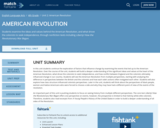
In this unit students continue the exploration of factors that influence change by examining the events that led up to the American Revolution. Over the course of the unit, students will build a deeper understanding of the significant ideas and values at the heart of the American Revolution, what drove the colonists to seek independence, and how conflict between England and the colonists ultimately influenced change in our country. Students will see the American Revolution from multiple perspectives, starting with analyzing the difference in perspectives between the British and the colonists and how each side's actions often instigated each other. Students will also explore how class structure influenced colonists perspectives. Later in the unit, students will think about the perspectives of black people, women and Native Americans who were forced to choose a side and why they may have had a different point of view of the events of the revolution.
An important part of this unit is pushing students to focus on seeing history from multiple different perspectives. The core text Liberty! How the Revolutionary War Began offers one perspective on events, however, the prespective is limited to that held by white elite colonists. Therefore, students also read excerpts from A Young People's History of the United States in order to build a deeper understanding of all sides of the Revolution.
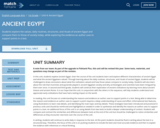
In this unit, students explore ancient Egypt. Over the course of the unit students learn and explore different characteristics of ancient Egypt and what the ancient Egyptians valued. Through learning about the daily routines, structures, and rituals of ancient Egypt, students will be challenged to draw conclusions about what the civilization valued and how those values compare to society today. Students will also learn about the role that mummies and pyramids played in ancient Egyptian society and why archeologists and scientists have been intrigued by them ever since. In second and third grade, students will continue their exploration of ancient civilizations by learning more about ancient Greece and ancient Rome. It is our hope that this unit, in conjunction with the others in the sequence, will help students understand and appreciate early civilizations that have had a lasting impact on the world.
In reading, this unit focuses on understanding the reasons and evidence an author uses to support points in a text. Being able to determine the reasons and evidence an author uses to support a point requires a deep understanding of cause and effect, informational text features, using illustrations to learn new details, and identifying the main topic and key details. These strategies have been introduced and practiced in previous units and should be reinforced and highlighted as needed in order to synthesize and identify the reasons an author uses to support points in a text. An additional focus of this unit is on using details from two texts to build a deeper understanding of content. Students will compare and contrast the similarities and differences between texts at the end of the unit but should be challenged to notice similarities and differences as they encounter new texts over the course of the unit.
In writing, students will continue to write daily in response to the text. At this point students should be fluid in writing about the text in a structured way. Therefore, the focus of this unit is on pushing students to include the best and most accurate evidence and then to explain the evidence with inferences or critical thinking.
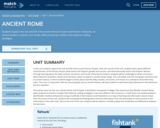
In this unit students explore the rise and fall of the ancient Roman Empire. Over the course of the unit, students learn about different characteristics of the Roman Empire, what lead to the Empire's growth and success, and what eventually lead to the Empire's demise. Through learning about the daily routines, structures, and rituals of the Roman Empire, students will be challenged to draw conclusions about what the civilization valued and how those values compare to societal values today. This unit builds onto the 2nd grade nonfiction unit on ancient Greece, in which students began to think about how the daily routines, structures, and rituals of a civilization show what they value. This unit, in conjunction with the second grade unit on ancient Greece, will help students understand early influences in the world and the first republics.
The mentor texts for this unit, Ancient Rome and Pompeii: A Nonfiction Companion to Magic Tree House and Eye Wonder: Ancient Rome, allow students to practice multiple informational reading strategies in two very different text structures. In both texts, but predominately in Eye Wonder, students will practice using a multitude of text features and illustrations as a way of learning new information about a topic. Over the course of this unit, students will constantly be thinking about how the information from one text builds on and connects to the information in the other text. Then at the end of the unit, students will be asked to critically analyze the similarities and differences between the two texts.
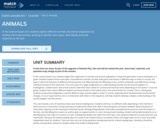
In this science-based unit, students begin their exploration of animals and animal adaptations. Using next generation science standards as a guide, students explore three main topics: how different animals use their body parts and senses in different ways in order to survive, the ways in which the behavior of different animal parents and offspring help the offspring survive, and the similarities and differences among individual animals of the same kind. This unit is part of a larger progression on understanding animals and the animal kingdom. In kindergarten, students learn about how animals meet their basic needs for survival and how that varies depending on the season. In second grade, students learn about different habitats and how animals in the habitat rely on the environment for survival. Then in third grade, students study animal adaptations and the different ways animals adapt in order to survive, especially when threatened by environmental changes. It is our hope that this unit, in combination with others in the sequence, will help students develop a deeper understanding of the animal kingdom and life science.
This unit includes a mix of read-aloud texts and shared-reading texts. Students will focus on different skills depending on the method in which the text is consumed. During read aloud, students will refine their skills in describing the connection between ideas and pieces of information, figuring out the meaning of unknown words, distinguishing between information provided by the pictures and information in the text, and identifying the reasons an author gives to support points in a text. During shared reading, students will predominately focus on identifying the main topic of a section of a text, retelling key details that match the main topic, and using text features to locate key facts and information. Because the shared reading days are meant to be student driven, not teacher driven, the target tasks are at a more accessible, independent level for students. There are also not a lot of key questions already planned for shared reading days. Questions should be written and spiraled in based on student needs and student reading levels.
In writing, this unit builds on the work students did in unit one. Students will continue to write daily in response to the text, with a focus on correctly answering questions and adding an inference or critical thinking.

This guided reading of Edgar Allan Poe’s “Annabel Lee” (1849) focuses on developing student understanding of imagery and other figurative language, strengthening reading comprehension, and strengthening expository and persuasive writing skills.

Students will read a variety of texts to include Fiction and Literary Nonfiction, Poetry, and Expository Nonfiction to complete the following tasks:1) read and annotate both a fiction and nonfiction paired passage2) complete the Author's Craft Graphic Organizer for each text.3) write a paragraph comparing and contrasting the two texts using the graphic organizer for guidance.

Students examine the characterization of a character in a novel or short story to complete the "Autopsy of a Protagonist" slideshow.
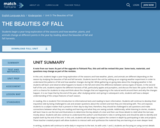
In this unit, students begin a year-long exploration of the seasons and how weather, plants, and animals are different depending on the season by studying the beauties of fall and fall harvests. Students launch the unit by setting up an ongoing weather experiment in order to understand the patterns of fall and how weather changes during fall. While gathering on-going data about the changing weather in fall, students will learn and observe what happens to leaves in the fall and notice the difference between various types of leaves. In the second half of the unit, students explore the different harvests of fall, particularly apples and pumpkins, and discuss the basic life cycles of both. This unit is a chance for students to stop and think about the changes that are happening in the natural world around them and why the changes happen. It is our hope that by the end of the year, after studying winter and spring in subsequent units, students will have a deeper understanding of the unique features of each season.
In reading, this is students' first introduction to informational texts and reading to learn information. Students will continue to develop their inquisitive side by being challenged to ask and answer questions about the content and text they are interacting with. This unit exposes students to a subject matter that is present in their day-to-day lives; therefore, they should be challenged to ask questions and make connections between what they are reading and learning and what they are seeing outside. Additionally, while listening to stories, students will learn how to use the text and illustrations to determine the key details of a text and then use those details to retell what the text was mostly about. Students will also continue to understand the author's and illustrator's roles in writing texts and should be able to identify and explain both by the end of the unit. In this unit, students will also begin to explore the content in-depth by participating in labs and projects. These teacher-created projects will allow students to interact with and synthesize the material they are learning at an even deeper level.
In writing, students will continue to write daily in response to the text. As with units 1 and 2, students are focusing on using correct details from the text to answer the question. Students should be using a combination of words and pictures, depending on the student's development as a writer. Daily teaching points, based on student data, should be included to ensure that students are progressing as writers.
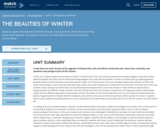
In this unit, students explore the beauties of winter. In the first part of the unit students pretend to be meteorologists as they learn about different weather forecasts and the words that meteorologists use to describe the weather in winter. Students start by exploring generic weather words and then transition into winter-specific words. In the second part of the unit, students explore how animals survive in the winter and the ways in which animals meet their basic needs, even when the ground is covered with ice and snow. In the last part of the unit, students read a variety of Jan Brett texts and use what they have learned about snow and animals to make inferences about what is happening with the different winter animals in the text. By the end of the unit, students should have a strong grasp of what makes winter unique and the different ways plants and animals survive in the winter. Due to the timing of this unit, it is our hope that students will have plenty of opportunities to interact with the vocabulary and content in the natural world around them. When outside for recess or anytime that it snows, students should be pushed to use the vocabulary and content they are learning in the unit so that the content can fully come to life.
In reading, this unit is predominately a collection of informational texts and builds on skills and strategies from earlier units. At this point it is assumed that students are inquisitive consumers of text and are able to ask and answer questions about a text in order to deepen understanding of the content. In this unit, students will continue to be challenged to identify the main topic of a text, retell the key details that connect to the main topic, describe the connection between ideas in a text, and use the illustrations and words to describe and retell what is happening in a text with varying levels of teacher support. Students will also begin to use strategies to ask and answer questions about unknown words in a text, specifically those connected to weather and snow. As part of daily text introductions, students will also continue to explore the purpose behind text features, specifically the front cover, back cover, and title page of a book, and how each feature supports understanding of the text. Many of the skills and strategies in this unit are spiraled from earlier units or will be spiraled through upcoming units; therefore, it is up to the teacher to decide what level of support students need with the particular strategy and scaffold accordingly.
In writing, students will continue to write daily in response to the text. At this point in the year, students should be using a combination of drawing and words to correctly answer the question. Pick focus teaching points based on data from previous units and individual student needs.

This guided reading of Edgar Allan Poe’s “The Bells” (1848) focuses on developing student understanding of imagery and other figurative language, strengthening reading comprehension, and strengthening expository and persuasive writing skills.

Students will read a fiction text to create a journal in the voice of a character of their choice. Students will record noticings about the character's characterization and how incidents in the plot lead to a change in their character.
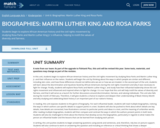
In this unit, students begin to explore African-American history and the civil rights movement by studying Rosa Parks and Martin Luther King Jr. and their influence on the nation. Students will begin the unit by thinking about the ways in which people are similar and different, including skin color, and how those differences should not define who we are or how we are treated. In the second part of the unit, students will learn about the discrimination and injustices faced by African-Americans during the civil rights movement and why it was necessary to fight for change. Finally, students will explore Rosa Parks and Martin Luther King Jr. and study how their influential leadership drove the civil rights movement and influenced and inspired others to fight for change. It is our hope that this unit will help instill the values of diversity and fairness, and that it will serve as a launch for further discussions around discrimination, fairness, and valuing individuals. This unit also falls during the month of February. Therefore, it will give students a chance to explore and deepen their understanding of Black History Month and why studying and celebrating black history is an important part of our nation's history.
In reading, this unit exposes students to the genre of biography. For each influential leader, students will read multiple biographies, noticing the ways in which authors use specific details to support points in a text. Students will also be pushed to think about which details are key details, how details are connected, how illustrations connect to particular points and ideas in a text, and the meaning of unfamiliar words. After reading multiple biographies, students will then compare and contrast the ways in which the authors present points in both texts. Students will also be challenged to think about the themes that develop across the biographies, particularly in regards to what makes the person an influential leader and the lessons that can be learned from studying each person.
In writing, this unit pushes students to begin answering questions using words and sentences, and, therefore, rely less on picture support. Students will also continue to work on answering the question and including an inference or critical thinking that shows a deeper understanding of the text. At this point, all structure focus correction areas should be taught; therefore, the focus of this unit should be on providing individualized feedback to students who are not at a 3 or 4 on the rubric.
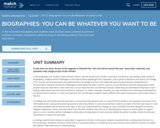
In this biography unit, students read and learn about a diverse assortment of artists, musicians, and dancers. By reading a wide variety of biographies, students will be challenged to think about where people get their inspiration, how a person's decisions and actions can change his or her life, and how hard work and determination can change a person's life, especially when facing instances of prejudice and discrimination. Students will also be challenged to think about the ways in which a person can be influential and how reading about other people's lives can help them in their own lives. It is our hope that this unit will help students realize they can be whatever they want to be if they are determined and work hard, and that no obstacle, no matter how big it may feel, can stop someone from achieving something they are determined to achieve. It is also our hope that this unit will open students' eyes to different life paths and passions, particularly those in the arts.
In reading, this unit builds onto the work done in previously informational units. It is assumed that students are inquisitive consumers of an informational text, asking and answering questions about key details. It is also assumed that students are able to find the main topic of a text and retell key details that fit with the main idea. In this unit, students will focus deeply on cause and effect and describing the connection between individuals, events, and information from the text. Another main focus is on identifying the reasons an author gives to support points in a text. Students will be challenged to think about the big ideas of a text and what details the author includes in both the text and illustrations to support the key ideas.
In writing, students will continue to write daily in response to the text. At this point, students should be fluid in writing about the text in a structured way. Therefore, the focus of this unit is on pushing students to include the best and most accurate evidence and then to explain the evidence with inferences or critical thinking.
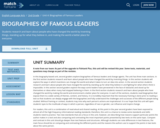
In this biography-based unit, second graders explore biographies of famous leaders and change agents. The unit has three main sections. In the first section students research and learn about people who have changed the world by inventing things. In this section students will explore the ways in which inventions can change the world and what it takes to turn an idea into action. In the second section students research and learn about people who have changed the world by standing up for what they believe in and fighting for what others think is impossible. In this section second graders explore the ways some leaders have persevered in the face of obstacles and stood up for themselves or ideas when many had stopped believing in them. In the third section students research and learn about people who have changed the world by making the world and environment a better place for everyone. In each of the sections, students read biographies that expose them to a wide variety of themes, content, and history. It is incredibly important that the necessary framing is done prior to reading a text so that students can deeply engage with the biographies and fully understand the challenges and successes of the different people being studied. Without framing or context, students may miss why each person's actions are inspirational. It is our hope that this unit will open students' eyes to the multitude of ways in which a person, regardless of race or gender, can influence and inspire change.
For readers, this unit is a combination of read-aloud and shared reading. At this point in the year second graders have been exposed to almost all of the high-frequency informational reading standards; therefore, this unit is a chance to review some standards and skills students need to practice. Two new standards that are a focus in this unit, however, are describing how reasons support particular points the author makes in a text and also comparing and contrasting the most important points presented by two texts on the same topic. Compare and contrast in this unit should go deeper than text features and structures. Although students can note differences in text features, the main focus should be on comparing and contrasting the different points and the reasons the authors use to support the points in two texts about the same person.

In this unit students explore the Taliban influence on the Middle East through the eyes of multiple young women. In the core text, The Breadwinner, students experience how the Taliban presence in Afghanistan drastically altered Parvana and her family's life. Students will be challenged to think about what constitutes basic human rights and the way in which the Taliban violated the human rights of many Afghanistan citizens. Students will also be challenged to think about women's rights, especially in regard to education and freedom, and how both were constantly at risk under Taliban rule. Finally, students will realize that a positive attitude, dedication to family, and drive to be self-reliant can help people survive, and thrive, in the worst of situations. In the second part of the unit, students read about the experiences of real children living in Afghanistan after the Taliban left. Through those experiences, students explore how education and women's rights are still restricted in Afghanistan and grapple with what it will take to create a society where women have access to the same basic freedoms as men. In the last part of the unit, students meet Malala Yousafzai and analyze how her positive attitude and drive help her fight for women's rights in Pakistan despite facing incredible challenges and threats. Over the course of the entire unit, it is our hope that students will build a deeper understanding of the importance of women's rights and access to education around the world, particularly in the Middle East.
As readers, this unit builds onto unit one by pushing students to compare and contrast characters and analyze character point of view at an even deeper level. Students will be challenged to close read the text, make accurate annotations, and quote accurately in order to develop theories about key characters in and across texts. In this unit, students will also begin to use informational texts, particularly memories and first-person accounts, to help build a deeper understanding of fiction texts. The focus for informational reading is similar to the focus for fiction, and students will analyze how the point of view influences the way in which events are described.
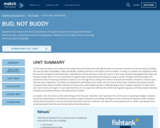
In this historical fiction unit, students learn about the Great Depression through the eyes of a ten-year-old African-American boy by reading the core text Bud, Not Buddy. In Bud, Not Buddy, students join Bud on his quest to find his father. In doing so, students are exposed to what life was like during the Great Depression, especially for African-Americans. Over the course of the novel, students will grapple with lying, and if lying is always bad or if it can sometimes be a good thing, as they witness Bud lying as a way to survive. Students will also analyze and explore the idea of maturity and what it means to act one's age versus acting more mature as Bud finds himself in situations most ten-year-olds will never experience. The theme of compassion and kindness also arises over the course of the novel. Students will analyze how the compassionate actions of others help Bud on his journey, while deepening their understanding of why it's always important to help others, even when times are tough. It is our hope that this unit, in conjunction with the rest of the fourth-grade sequence, will help students develop empathy and understanding for the experiences of others.
As readers, this unit serves as the culminating unit for the year. Therefore, the majority of the unit focuses on spiraling strategies. Students should be pushed daily to summarize key events, analyze characters and setting, and figure out the meaning of unknown words. Students should also be pushed to use the information they learn from the nonfiction text about the Great Depression to confirm and deepen their understanding of what life was like during the Great Depression.